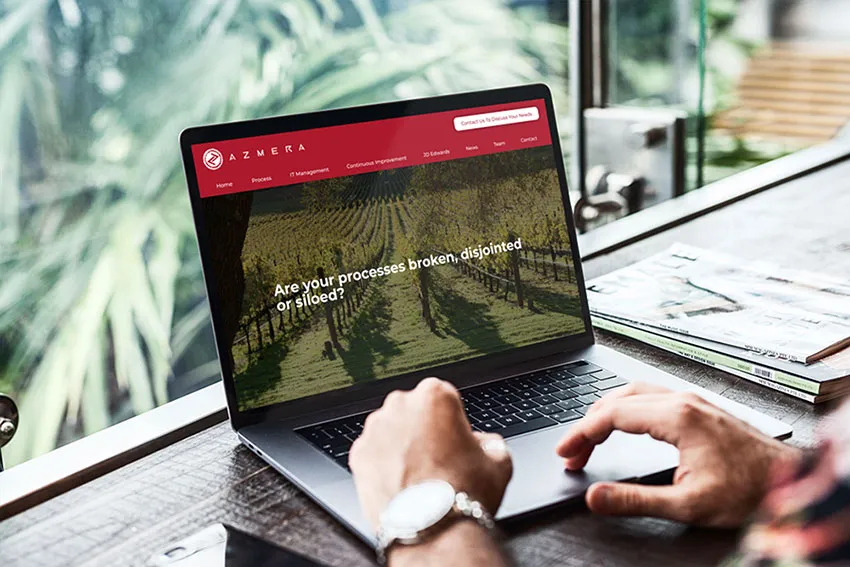Can you share a bit about your design education and background?
Collins: I started my design education at a private art school, then transferred to Northern Michigan University. I explored different fields in art. Besides graphic design, I took classes in weaving, pottery, art history, psychology, and sociology.
With art history, I enjoyed learning from the masters’ works. As a student, I was inspired by those works, especially the color schemes and how people react to colors. Those masterpieces helped me discover what’s possible in art.
I learned that art is a reflection of the society we live in — thus, learning the history can help me understand art better.
Studying psychology and sociology both help me gain a better understanding of how people think and behave. The knowledge combined with empathy helps me understand my clients today. I put myself in their shoes, explore more about them, and figure out the best ways to present them to their audience through design.
How do you apply your education to your work as a Creative Director at Designity?
Collins: The most obvious part is the communication. Each of my clients has different personalities: some of them have a strong personality and know exactly what they want. Others have a vague idea about the work, so we have to explore it a bit more. As an expert, I adapt myself to the needs of my clients.
What’s an example of how you help different clients?
Collins: I had a client who was the CEO of a healthcare company. In that case, I listened more than I talked. I left my professional suggestions open-ended (i.e: “These are my professional ideas about XYZ, but it’s up to you to choose one.”).
For clients who are uncertain about what they need, I ask them more questions and help them to reveal the story of their business and what they need.
Do you always take your clients’ audience profile into consideration?
Collins: Absolutely. That’s why I ask questions, to better understand the client’s customers. When they answer, I sometimes push back to make sure both parties understand what was just discussed. Most of the companies do a great job of answering the questions, but others need more guidance. For example, I will say, “In my experience, this audience responds well to XYZ, or “Hey, have you thought of this idea to get people to sign up for your newsletter?”
What are your specialties?
Collins: Website, branding, and print. I see both a brochure and website as a series of pages. Each page conveys information about the company — the logo, company identity, product, offer, or service. All of these requires a visual “hierarchy,” to help steer visitors through the process of reading and absorbing the information.
Strategy also comes into play. For example, for clients who are active with email campaigns, I will raise the priority of the email newsletter CTA (call to action) on their website.
What do you think is the most important part of the design process?
Collins: People always come to us and ask, “Can you make this website look nicer?” By asking this question, they are defining design as merely an aggregation of color, image, font, and artworks. But it’s much more than that.
I believe a key part of design is strategy — i.e., your process for reaching your goal. You cannot make something look good, unless you first know what you’re making, and why. When you take a step back, you can think about why you need a website in the first place. You can think about who your business is appealing to, and how to best organize the elements on your pages. “Process makes perfect.”
Can you share an example of this “step-back” strategy?
Collins: Sure. I worked with a client from a large healthcare software company who does medical claims billing. Many of their employees work remotely. They wanted to have a standardized document for all of their employees to use.
The first project we talked about was a PowerPoint presentation, and the client wasn’t sure about the images in their slides. I suggested using an image of a high-end office instead of finding a generic picture to represent their industry.
My reason was: for the people seeing the presentation, their takeaway would be that this company is very successful, professional, knows what they’re doing, and is trustworthy. This was eye-opening for the client, because she had never thought about that. After the conversation, she was inspired to go back and think more about what they were doing, and why they were doing it in this way.
This kind of “rethinking” has benefited their company a great deal.
Great lesson to learn. What is the process you use to learn about your clients and their industries?
Collins: Before the kick-off meeting, I review the client, industry, and competitors on my own. The initial discussion with the client is primarily what helps me learn more about them.
I recently worked on a brochure for a manufacturing company in Luxembourg. Their first product was an electrical, foldable, high-end scooter. However, given that they’re essentially an engineering company, the new brochure was intended to pivot the company away from being seen as a “merely” a scooter company.
They wanted to leverage the brochure to demonstrate their capacity to make electric vehicles. In this process, I learned a lot about manufacturing engineering, mechanical engineering, and software engineering — which were all part of their business.
How has Designity influenced your career/life as a freelancer?
Collins: With not living in a big city, it can be hard to connect with clients outside my area. Designity has helped me make great connections with clients from all over the country and the world.
If you’d like to hire Collins for your next design project, click here to schedule a consultation.

